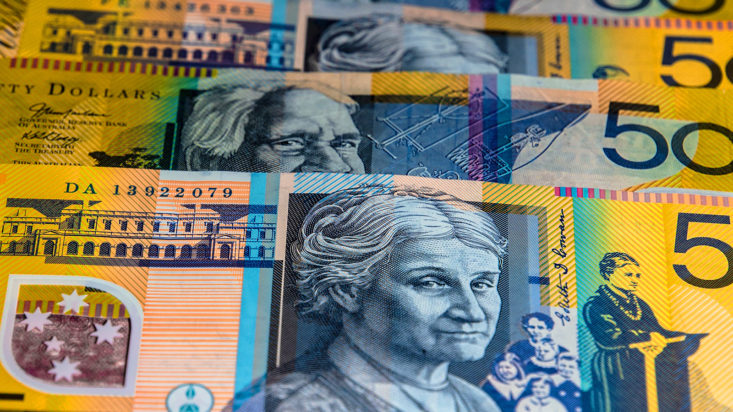Local dollar’s slide prompts hedging question
The Australian dollar could fall to US65 cents by the year’s end as higher interest rates in the US and capital inflows push the US dollar higher. The currency’s fall is boosting returns from unhedged offshore share investments, but experts are mixed on whether the currency weakness will be maintained over he short to medium term.
A fall in the Australian dollar magnifies returns when international assets are converted into local currency. This relationship extends into Australian companies with primarily US dollar earnings such as CSL and Resmed, whose earnings become more valuable with a weaker local currency. The opposite also holds true; a rise in the Australian dollar decreases returns and translates to lower buying power for international investments.
Whether to hedge your offshore investments depends on your long-term view of the Australian dollar against the particular currency of the country in which you are investing and your timeframe; investors with longer time horizons may prefer unhedged international shares investments and accept short-term currency volatility. Currency risks even out over the long run – what goes up, must come down – and currency volatility is smoothed out. As a result, there could be less reason to hedge currency movements over the long term. Vanguard research show that currency movements generally have a neutral impact on returns over the longer term.
On the other hand, hedging can also play a part if you are a conservative investor and simply don’t want to expose yourself to any currency volatility. “Currency hedging reduces the impact of exchange rate fluctuations on your investments traded in another currency, such as the US dollar (USD),” says Matthew Torney of Muirfield Financial Services.
“Think of hedging as an insurance policy against the impact of foreign exchange risk. Ultimately, to hedge or not to hedge depends on your risk profile and your situation and what you’re currently invested in,” he says.
“If you are overexposed to a rising Australian dollar, then it might be worth hedging your portfolio. Otherwise, it is healthy to have exposure to the US dollar and other foreign currencies in the name of diversification,” he says.
Taking a bet each way
To alleviate currency risk, some ASX-listed international ETFs and super funds with exposure to international shares are ‘hedged’ on investors’ behalf. Other times it is up to you.
A common route being taken by investors is to take a bet each way on the currency and buy into both hedged and unhedged managed international share funds. The more conservative you are, you may adopt a higher ratio of hedged investments versus unhedged investments. There has been an increasing trend for fund managers to launch hedged and unhedged options on international equity funds, putting the onus on the investor with their advisor to make the decision on hedging.
It also depends which asset class you’re talking about. Hedging is often applied to international bond or fixed income investments, as it’s considered essential to maintain the smooth flow of income from a bond portfolio. International equities or growth portfolios are often unhedged. Ultimately the decision on whether to hedge your international exposures into Australian dollars comes down to your risk tolerance.
“It is not a one size fits all decision – and one that should be made after building a plan, establishing an asset allocation, and managing cost. In the end it may be that a position of least regret – often favored by financial advisers – which is to hedge 50 per cent of the portfolio,” says Robin Bowerman, head of corporate affairs, Vanguard Australia.
Mixed views on currency direction
Whether the local dollar’s weakness will continue depends on who you ask. Diana Mousina, senior economist with AMP Investments, expects the currency to lift to US75cents by the year’s end, buoyed by strength in commodity prices. Global growth could also improve if central banks back off from aggressive rate hikes and inflation slows, which “is expected to be positive for pro-cyclical currencies like the Australian dollar,” according to Mousina. The National Australia Bank too expects the currency to rise to US72 cents by the year’s end.
On the other hand, the Commonwealth Bank expects the currency to fall to US65 cents given ongoing strength in the US dollar. So, with the experts divided and your risk tolerance different from the next investor’s, it may be wise to consult a licensed financial adviser to guide you in your investment choices, including hedging strategies.
Like any insurance, there is a cost to hedging that investors need to consider – investors can expect to add an additional fee of 5 to 10 basis points to the cost of an unhedged managed fund version. But like any insurance, that’s a small cost compared to returns you could be protecting.











